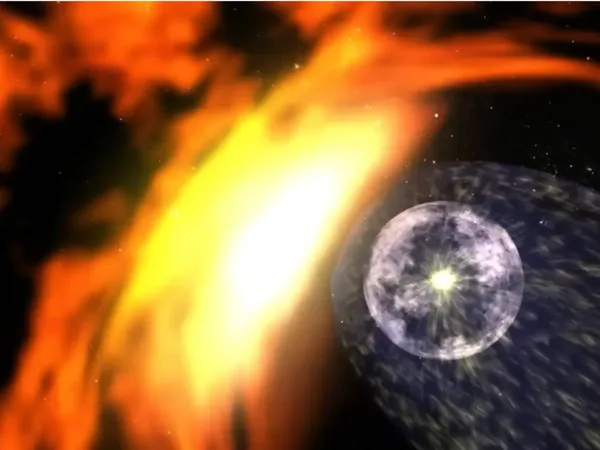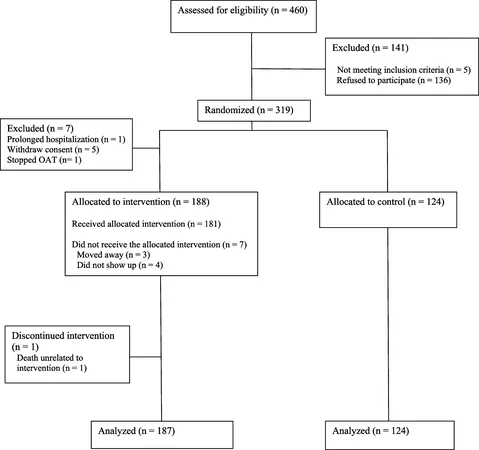
Astronomers Unveil Bizarre New Supernova, Thanks to AI Technology!
2025-08-17
Author: Wei Ling
A Discovery Like No Other!
In a groundbreaking revelation, astronomers have stumbled upon a totally unique type of supernova, thanks to cutting-edge artificial intelligence! Dubbed SN 2023zkd, this celestial event was identified by the Zwicky Transient Facility at California's Palomar Observatory in July 2023. Unlike traditional discoveries that often rely on sheer luck, the detection of this stellar explosion was systematically guided by an AI system, following a model much like Spotify uses for music recommendations.
A Supernova with a Twist!
At first glance, SN 2023zkd appeared to be a typical supernova, but upon deeper examination, scientists uncovered its truly bizarre behavior. Located a staggering 730 million light-years away, this explosion exhibited an unexpected pattern: it initially brightened, then faded, only to brighten again dramatically. Archival data further revealed that the star had been gradually warming up for four years prior to its explosive finale—an astonishing behavior rarely documented in the universe of supernovae.
Cosmic Drama: Star vs. Black Hole!
The collaborative research effort led by the Harvard & Smithsonian Center for Astrophysics and MIT, as part of the Young Supernova Experiment, suggests this eruption was influenced by a dramatic encounter between a massive star and a nearby black hole. Alexander Gagliano, the study’s lead author, stated, "Our analysis highlights how a catastrophic run-in with a black hole companion might be the trigger for such an explosive event, marking a significant breakthrough in our understanding of stellar deaths."
What Caused This Explosive Encounter?
Speculation suggests that as the massive star spiraled closer to the black hole, it could have faced gravitational forces strong enough to ignite its explosive end. Alternatively, there’s a theory that the black hole could have ripped apart the star and consumed its remnants, as the ensuing chaos lit up the supernova’s signature glow. In either scenario, it appears a heavier black hole may have emerged from the aftermath.
AI at the Helm of Cosmic Discoveries!
The artificial intelligence responsible for this cosmic detective work is known as Lightcurve Anomaly Identification and Similarity Search (LAISS). This innovative algorithm, modeled after a music recommendation system like Spotify’s, scours astronomical data to identify anomalies by comparing light signals against a vast database of known celestial objects. Remarkably, LAISS flagged SN 2023zkd months before its peculiar behavior unfolded, allowing scientists to prepare telescopic observations from both Earth and space—including NASA’s Neil Gehrels Swift Observatory.
The Future of Cosmic Exploration!
V. Ashley Villar, a co-author and astronomy professor at Harvard, indicated that 2023zkd showcases some of the most evident signs of a large star’s interaction with a companion in the pre-explosion phase. "There’s a chance this event is merely the tip of the iceberg, hinting at a new class of hidden supernovae that AI will help us uncover," Villar noted. With upcoming initiatives like the Vera C. Rubin Observatory, which plans to scan the entire night sky every few days, astronomers are optimistic that AI systems like LAISS will continue to be instrumental in detecting and understanding rare cosmic phenomena.



 Brasil (PT)
Brasil (PT)
 Canada (EN)
Canada (EN)
 Chile (ES)
Chile (ES)
 Česko (CS)
Česko (CS)
 대한민국 (KO)
대한민국 (KO)
 España (ES)
España (ES)
 France (FR)
France (FR)
 Hong Kong (EN)
Hong Kong (EN)
 Italia (IT)
Italia (IT)
 日本 (JA)
日本 (JA)
 Magyarország (HU)
Magyarország (HU)
 Norge (NO)
Norge (NO)
 Polska (PL)
Polska (PL)
 Schweiz (DE)
Schweiz (DE)
 Singapore (EN)
Singapore (EN)
 Sverige (SV)
Sverige (SV)
 Suomi (FI)
Suomi (FI)
 Türkiye (TR)
Türkiye (TR)
 الإمارات العربية المتحدة (AR)
الإمارات العربية المتحدة (AR)